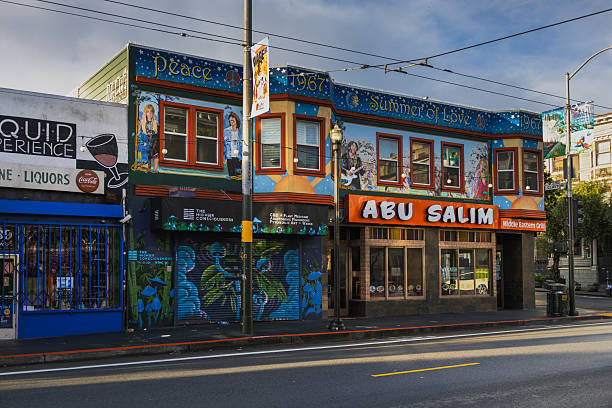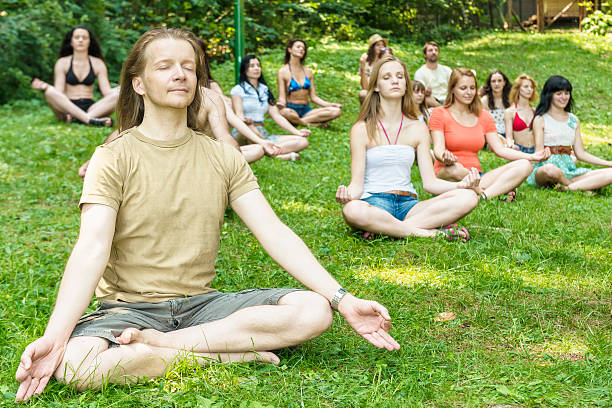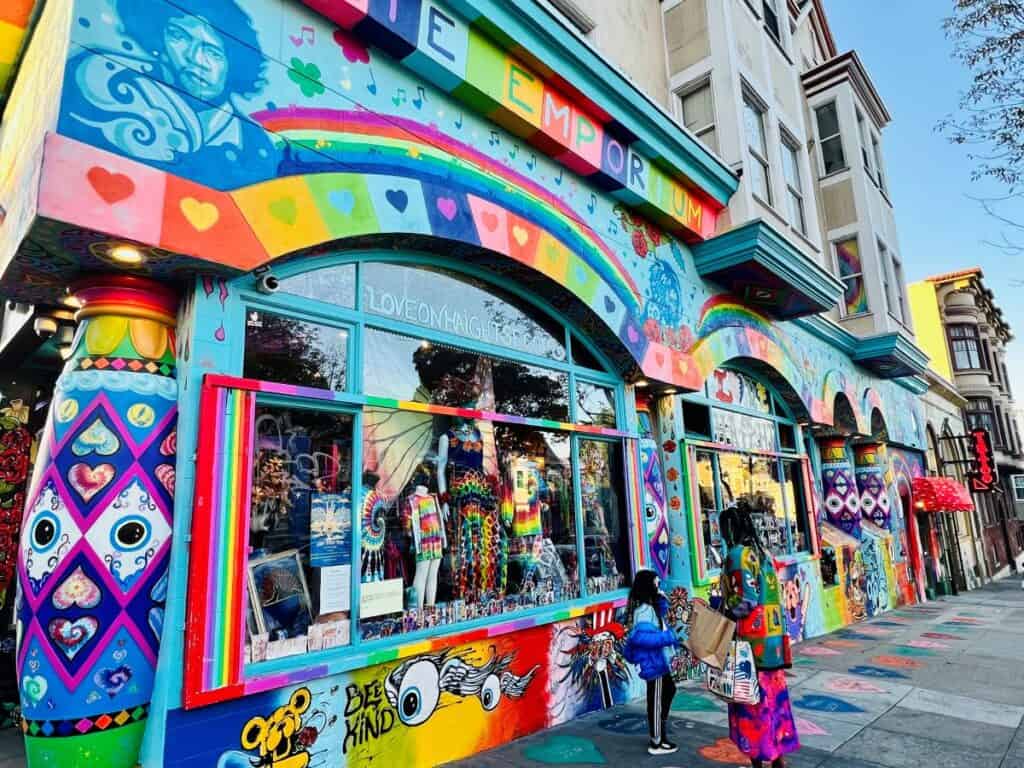Table of Contents
Introduction to Haight-Ashbury Hippie Culture
The Haight-Ashbury hippie culture in San Francisco is a defining symbol of 1960s counterculture. With colorful Victorian houses, vibrant murals, and a thriving music scene, Haight-Ashbury became a hub for young people who rejected mainstream norms and embraced free love, peace, and artistic expression. Today, the neighborhood remains a living museum of the hippie era, blending historic landmarks with modern alternative culture.

The Origins of Haight-Ashbury Hippie Culture
Haight-Ashbury’s transformation into a countercultural hub began in the early 1960s. Affordable housing, communal living opportunities, and a progressive atmosphere attracted young artists, musicians, and activists. This eclectic mix laid the groundwork for what would become one of America’s most influential cultural movements.
- Communal living: Shared homes and resources fostered a sense of community.
- Artistic experimentation: Street art, murals, and performance spaces flourished.
- Political activism: Residents advocated for civil rights, environmental awareness, and anti-war protests.
The Summer of Love
The Summer of Love (1967) marked the pinnacle of Haight-Ashbury hippie culture. Over 100,000 people converged on the neighborhood, embracing ideals of love, peace, and self-expression.
Key elements included:
- Music Festivals: Jefferson Airplane, Grateful Dead, and Janis Joplin defined the era.
- Psychedelic Art: Murals, posters, and tie-dye fashion became visual symbols of the movement.
- Spiritual Exploration: Meditation, yoga, and Eastern philosophies flourished.
This event catapulted San Francisco to the forefront of global counterculture, leaving a lasting cultural imprint.
Suggested Image: Archival photo of Haight-Ashbury during the Summer of Love.
Music and Arts of Haight-Ashbury Hippie Culture
Music was the heartbeat of Haight-Ashbury hippie culture. Bands like The Grateful Dead, Jefferson Airplane, Janis Joplin, and Santana performed in Golden Gate Park and local venues, creating a soundtrack for a generation.
The arts also thrived:
- Psychedelic Posters: Bright, abstract designs promoted concerts and cultural events.
- Tie-Dye Fashion: Symbolized individuality and freedom.
- Street Art & Murals: Visually captured the ideals of love, peace, and social change.
Suggested Image: Psychedelic concert poster and murals in Haight-Ashbury.
Political Activism and Social Change
The Haight-Ashbury hippie culture went beyond music and art—it was politically active. Residents protested the Vietnam War, supported civil rights movements, and advocated for environmental awareness.
- Anti-War Demonstrations: Hippies organized marches and sit-ins.
- Civil Rights & Equality: The community promoted racial and gender equality.
- Environmentalism: Awareness about nature and sustainability emerged from hippie philosophies.
This activism helped shape San Francisco’s progressive identity, influencing future generations.
Spirituality and Alternative Lifestyles
Spiritual exploration was central to Haight-Ashbury hippie culture. Residents embraced:
- Eastern Philosophy: Meditation, yoga, and mindfulness practices.
- Communal Living: Shared resources encouraged cooperation and creativity.
- Alternative Healing: Herbal remedies, holistic wellness, and experimental lifestyles.
These practices contributed to the neighborhood’s reputation as a center of personal growth and spiritual exploration.

Visiting Haight-Ashbury Today
While the original hippie era has passed, Haight-Ashbury remains a vibrant destination:
- Haight Street: Shops, record stores, vintage clothing, and cafes reflect the neighborhood’s eclectic spirit.
- Hippie Hill in Golden Gate Park: Still a gathering place for music, relaxation, and community.
- Murals & Street Art: Modern interpretations celebrate peace, love, and counterculture.
- Historic Homes: Victorian houses once inhabited by musicians and activists.
- Events: Haight-Ashbury Street Fair and cultural festivals celebrate the neighborhood’s legacy.

The Global Influence of Haight-Ashbury Hippie Culture
The influence of Haight-Ashbury hippie culture extends far beyond San Francisco:
- Music and Festivals: Inspired Woodstock and global music movements.
- Fashion Trends: Tie-dye, flowing garments, and eclectic styles became worldwide symbols.
- Countercultural Ideals: Promoted peace, environmentalism, and social activism globally.
- Spiritual Practices: Meditation, yoga, and holistic lifestyles spread worldwide.
Tips for Experiencing Haight-Ashbury Hippie Culture
- Go early in the day for quieter streets and a relaxed experience.
- Visit local shops and cafes for unique souvenirs and vintage items.
- Explore murals and street art to understand the neighborhood’s creative spirit.
- Walk to Golden Gate Park for Hippie Hill gatherings and live music.
- Attend festivals or guided tours to learn about historical landmarks.
FAQ: Haight-Ashbury Hippie Culture
Q1: What is Haight-Ashbury famous for?
Haight-Ashbury is famous as the epicenter of the 1960s hippie movement, known for music, art, and alternative lifestyles.
Q2: Can visitors still experience hippie culture there?
Yes, through vintage shops, murals, Hippie Hill, street fairs, and historic landmarks.
Q3: Who were some notable figures of Haight-Ashbury hippie culture?
Key figures include Janis Joplin, members of The Grateful Dead, Jefferson Airplane, and poet Allen Ginsberg.
Q4: What is Hippie Hill?
A popular gathering spot in Golden Gate Park where people still enjoy music, relaxation, and community events.
Q5: Why did the hippie movement thrive in Haight-Ashbury?
Affordable housing, communal living, and a creative, open-minded culture attracted thousands seeking freedom from mainstream norms.
Conclusion: The Enduring Legacy of Haight-Ashbury Hippie Culture
The Haight-Ashbury hippie culture continues to inspire creativity, freedom, and social consciousness. From its origins in the 1960s to modern-day celebrations, this neighborhood remains a living monument to peace, love, and self-expression. Visiting Haight-Ashbury today allows you to step into a unique blend of history, art, music, and alternative lifestyle that changed the world.


Leave a Reply
You must be logged in to post a comment.